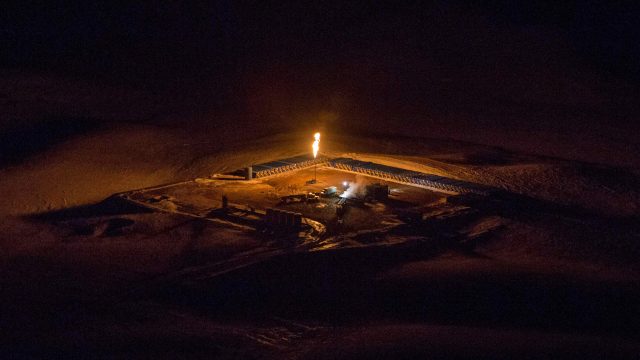Want To Reduce North Dakota Flaring? Lift The Gas Export Ban

There’s a big push to reduce North Dakota flaring, but it needs some help from Congress.
Yesterday the North Dakota Petroleum Council, which represents most of the oil industry in North Dakota, announced a goal set by the industry to collect 85 percent of the gas produced in North Dakota within two years, and 90 percent within six years.
The group believes that 95% capture is a possibility.
That would be a big improvement over current rates of capture, which according to the last report from the Department of Mineral Resources was at about 67.16 percent in November (that number was down a bit from 68.34 percent captured due to a gas plant in Tioga being shut down for upgrades).
It’s an aggressive goal, especially given that since September of 2011 (the high water mark for flaring during the Bakken boom with nearly 40 percent of gas produced going up in smoke) the amount of gas captured is up 151.5 percent (see chart to the right).
The increase in the amount of gas produced during that time was 125 percent, meaning the industry’s work to capture gas has already been outpacing the growth in gas produced.
So the oil industry deserves credit for what they’ve already accomplished on flaring, and what they plan to accomplish. But they could use some help from the federal level.
One inhibiting factor to the collection of natural gas is the rock-bottom prices for selling that gas to the marketplace. Anyone who reads the monthly “director’s cut” report from the DMR is aware of the monthly statement about low gas prices. The shale oil and gas boom in America has flooded the domestic market with natural gas. While the market is moving toward creating more demand for that gas (building natural gas power plants, for instance), we’re not going to see an optimal market for gas until Congress removes a trade barrier to international markets.
Harold Hamm of Continental Resources, the biggest player in the North Dakota oil fields, wants Congress to lift the export ban on crude oil (see his testimony from today to the Senate Energy and Natural Resources Committee here) . But there’s also a push to lift the ban on gas exports.
Right now producers who want to export gas can get a permit, but few permits are being approved. “In three and a half years, the administration has used its discretion to approve only five applications for liquefied natural gas,” Senator John Barrasso, R-Wyoming, said during a meeting of the Senate Energy and Natural Resources earlier this month. “Meanwhile the administration is sitting on over 20 pending applications.”
More gas exports means more demand for US gas. That means higher prices, and more incentive to capture the gas here in North Dakota.
Striking down the misguided, Carter-era trade restrictions for US oil and gas would be good not just for our nation’s economy, allowing domestic companies to sell to foreign markets, but also for our environment.





